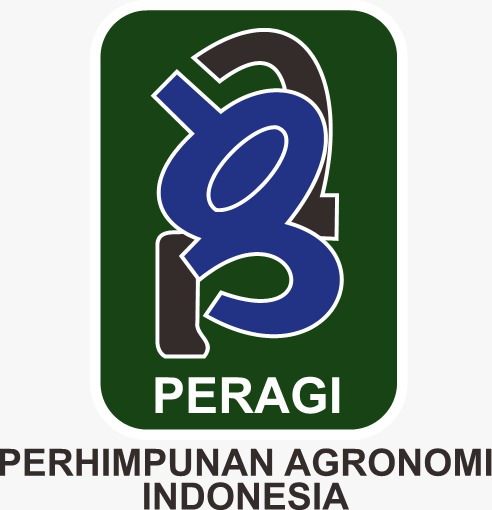Analysis of Botanical Composition and Potential of Kelakai Leaves (Stenochlaena palustris) of Peat Swamp Plants in Central Kalimantan as Medicinal Plants
Abstract
Central Kalimantan has a typical peatland habitat which is dominated by Kelakai (Stenochlaena palustris). Various kinds of plants from the Kelakai genus are, for example, the Stenochlaena genus, but the benefits are less known, namely Kelakai. Kelakai is a plant that has clearly visible main characteristics such as stems, roots and leaves. The purpose of this study was to analyze the botanical composition and potency of Kelakai growing on peatlands of Central Kalimantan as a medicinal plant. This research method was an exploratory method supported by laboratory experiments which aimed to determine its potential as a medicinal plant and wound epithelialization under controlled conditions. The data on the botanical composition of Kelakai were analyzed using descriptive analysis, where the sample was obtained by purposive random sampling, while the potency data was analyzed using the Oneway Anova test and then Duncan's 1% test was performed. The wound is on the abdomen 2 cm long. The treatment given was applying Kelakai extract gel with different concentrations on a regular basis every day for 3 days. The results showed that Kelakai on peat swamp land in Central Kalimantan was the most dominant, so it can be concluded that its botanical composition can be a source of forage. The nutritional content of the Kalakai swamp green is quite high, so the Kelakai leaf extract gel has proven potential and can be recommended as an effective wound healing drug at a concentration level of 35%, with the optimal concentration in wound healing at a concentration level of 40%.
Downloads
References
Ardiansyah, A., Hujjatusnaini, N., Amin, A. M., & Indahsari, L. I. N. (2021). Antibacterial Effectiveness of Methanol Extract Combination Formula 3: 2: 1 of Tambora Leaf (Ageratum conyzoides), Sembalit Angin Leaf (Mussaenda frondosa L), Turmeric Rhizome (Curcuma longa L) on the growth of Staphylococcos aureus. Sainstek: Jurnal Sains dan Teknologi, 13(1), 1-6.
Adawiyah, R., & Rizki, M. I. (2018). 5788-12516-1-Pb. 05(01), 71–77.
Arini, D. I. D., & Kinho, J. (2012). The pteridophyta diversity in Gunung Ambang Nature Reserve North Sulawesi. Info BPK Manado, 2(1), 17–40.
Fahruni, F., Handayani, R., & Novaryatiin, S. (2018). Potensi Tumbuhan Kelakai (Stenochlaena palustris (Burm.F.) Bedd.) asal Kalimantan Tengah sebagai Afrodisiaka. Jurnal Surya Medika, 3(2), 144–153. https://doi.org/10.33084/jsm.v3i2.114
Friska, Y. D., Hujjatusnaini, N., Ayatussa’adah, & Amin, A. M. (2021). The Potential Of Purple Leaves Ethanol Extract (Graptophyllum pictum L.) Against The Growth Of Staphylococcus aureus and Candida albicans. Jurnal Agronomi Tanaman Tropika (JUATIKA), 3(2), 196–207.
Handayani, E., Mundarti, & Rofiah, S. (2015). Factors Influence with Healing Perineum Laceration of Post Partum Mother Faktor yang Mempengaruhi Penyembuhan Luka Perineum Pada Ibu Post Partum Esti Handayani Mundarti Siti Rofiah Jurusan Kebidanan Magelang Poltekkes Kemenkes Semarang pada semua persalin. Jurnal Kebidanan, 11(3), 1041–1047.
Himawan, D., Mahmudah, R. L., & Fatmawati, A. (2019). p-ISSN : 2085 – 0204 e-ISSN : 2656 – 1808 Jurnal Ilmiah Kesehatan Sekolah Tinggi Ilmu Kesehatan MajapahiT. 1.
Hujjatusnaini, N., Erawati, D., Melisa, M., Nor, F., Shartono, D. F., Harlyani, Y., & Zulham, M. (2021). Ethnomicology of Basidiomycota fungus species in Central Kalimantan open forests. Journal of Physics: Conference Series, 1869(1). https://doi.org/10.1088/1742-6596/1869/1/012167
Hujjatusnaini, Noor, Muh, A., Feyby, H., & Perditson, A. (n.d.).(2022)Inovasi Minuman Tepache Berbahan Baku Kulit Nanas (Ananas comosus L. Merr.) Tersuspensi Probiotik Lactobacillus casei (Innovation of Tepache Beverages Made from Pineapple Skin (Ananas comosus (L.Merr.) Suplemented Probiotic Lactobacillus . 47–54.
Indah, B., Hujjatusnaini, N., Amin, A. M., & Indahsari, L. I. N. (2021). Methanol Extracts Formulation of Tambora Leaves (Ageratum conyzoides L.), Sembalit Angin Leaves (Mussaendafrondosa L.) and Turmina Rhizome (Curcuma longa) as Candida albicans Antifungal. Sainstek : Jurnal Sains dan Teknologi, 13(2), 105. https://doi.org/10.31958/js.v13i2.3473
Kusumaria, W. T. (2019). Implementasi Kebijakan Nasional Dan Daerah Terhadap Pengelolaan Hutan Berbasis Perubahan Iklim Melalui Instrumen Mitigasi Perubahan Iklim (Studi Kasus Di Kabupaten Mukomuko). In Tesis.
Rachmawani, N. R., & Oktarlina, R. Z. (2017). Khasiat Pemberian Buncis (Phaseolus vulgaris L.) sebagai Terapi Alternatif Diabetes Melitus Tipe 2. Jurnal Majority, 6(1), 71–76.
Rina Sugiarti Dwi Gita, S. D. (2019). Potensi biskuit fungsional dengan substitusi tepung daun kelor dan tepung ikan gabus dalam mempercepat kesembuhan luka dan meningkatkan sistem imunitas. Prosiding Seminar Nasional SIMBIOSIS IV, 68–73.
Saputri, R., & Putri, A. N. (2017). Potensi Ekstrak Etanol Herba Lampasau (Diplazium esculentum SWART) Sebagai Penyembuh Luka Sayat Pada Kulit Tikus. Borneo Journal of …, 01(01), 57–66. http://www.jurnalstikesborneolestari.ac.id/index.php/borneo/article/view/53
Widyastuti, R., Hujjatusnaini, N., Septiana, N., & Amin, A. M. (2021). Antimicrobial Potential Combination Formulation of 1:2:3 Methanol Extract of Tambora Leaf (Ageratum conyzoides L), Sembalit Angin Leaf (Mussaenda frondosa L), and Turmeric Rhizome (Curcuma longa) Against Escherichia coli. Sainstek : Jurnal Sains Dan Teknologi, 13(2), 121. https://doi.org/10.31958/js.v13i2.3465
Copyright (c) 2022 Noor Hujjatusnaini, Ema Puspitasari, Astuti Muh Amin

This work is licensed under a Creative Commons Attribution 4.0 International License.
Authors who publish with Jurnal Agronomi Tanaman Tropika (JUATIKA) agree to the following terms:
Authors retain copyright and grant the Jurnal Agronomi Tanaman Tropika (JUATIKA) right of first publication with the work simultaneously licensed under a Creative Commons Attribution License (CC BY 4.0) that allows others to share (copy and redistribute the material in any medium or format) and adapt (remix, transform, and build upon the material for any purpose, even commercially) with an acknowledgment of the work's authorship and initial publication in Jurnal Agronomi Tanaman Tropika (JUATIKA).
Authors are able to enter into separate, additional contractual arrangements for the non-exclusive distribution of the journal's published version of the work (e.g., post it to an institutional repository or publish it in a book), with an acknowledgment of its initial publication in Jurnal Agronomi Tanaman Tropika (JUATIKA). Authors are permitted and encouraged to post their work online (e.g., in institutional repositories or on their website) prior to and during the submission process, as it can lead to productive exchanges, as well as earlier and greater citation of published work.







 More Information
More Information



